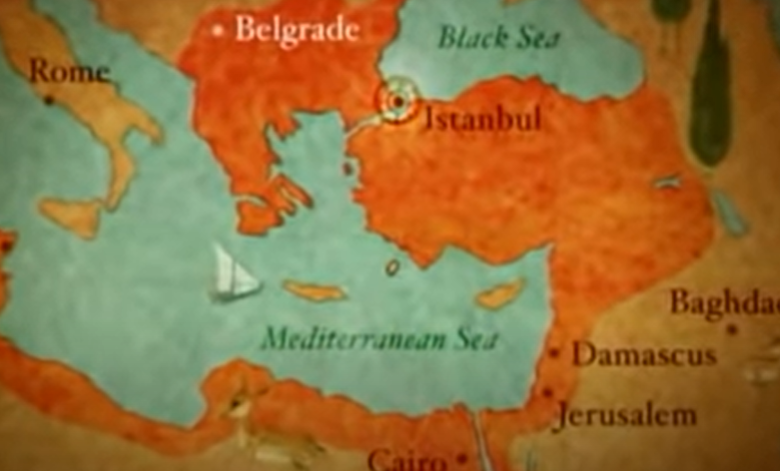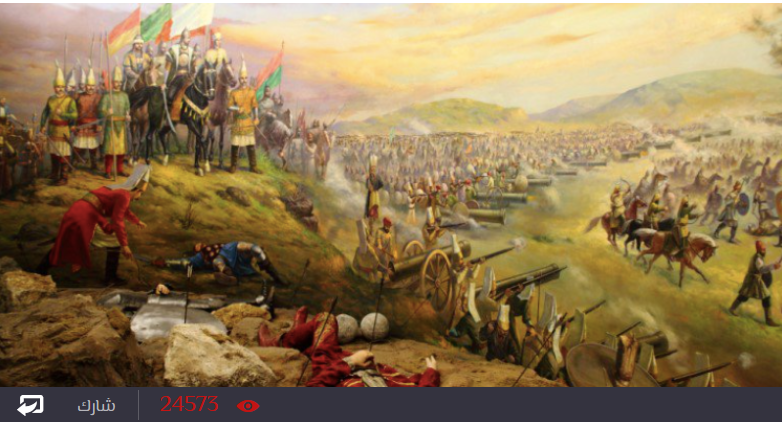The Siege of Belgrade .. The story of the first major conquests of Suleiman the Magnificent

Mehmed the Conqueror looked from afar, with great fury, at the fortified walls of Belgrade, which his army's huge cannons had been praying with lava for the past weeks. It never occurred to him that any walls in Europe or the entire world could withstand his face after the lofty walls of Constantinople collapsed before his eyes , only three years ago, in a conquest that shook the whole world from its east to its west.
Perhaps what Muhammad the Conqueror felt from the pain of defeat before the walls of Belgrade in 1456 AD , it would have disappeared if he had known that after 65 years completely, his grandson’s son, Suleiman I, son of Selim II, whom his enemies nicknamed Suleiman the Magnificent before his supporters, would succeed in conquering that intractable city. To open with it the gates of Eastern and Central Europe, so that his armies set out in a few years to control the entire Balkan Peninsula, the territory of the Kingdom of Hungary, and reach the outskirts of Vienna.

The Ottoman banners will be raised on the walls of Belgrade on a day in the month of August 1521, corresponding to the twenty-sixth of Ramadan in the year 927 AH, after several weeks of siege. To cause the whole of Christian Europe to tremble at a new great Islamic conquest, announcing the return of the Ottomans’ guns and cannons again to Europe (that return that will last for centuries) 40 years after the death of their greatest conqueror, Mehmed II - the Conqueror - as his son Bayezid II was more cautious in his European wars, While Selim I, the father of Solomon, was preoccupied with fierce wars against the Safavid Empire in Iran, and against the Mamluk state, which he eliminated in several months, and inherited its kingdoms, most notably Egypt and the Levant.
But before talking about the conquest of Belgrade, we will talk a little about the Ottoman Sultan Suleiman the Magnificent, the owner of this conquest, with whom he initiated his long series of conquests, which will include dozens of the most brilliant beads in the history of the Ottoman Empire, which will be witnessed in the arenas of Europe, the Mediterranean, the Persian Gulf, Iraq and others.
The doors of challenges open in the face of the young Sultan
The era of Suleiman the Magnificent - or Suleiman the Magnificent as described by most European references - which lasted for more than 46 years, is the mediator of the decade in the history of the Ottoman political, military, economic, administrative and cultural glory, bringing the area of lands under Ottoman rule to 15 million square kilometers, About 30 million people live in it, which is a very huge number by the standards of that time.
Suleiman was born around the year 1494 AD, that is, he was twenty-six years old, when he took over the Ottoman Empire in 1520 AD. Suleiman received the Ottoman Empire and it had become a great power, after his father tripled the area of its control over what the conqueror had left him, to reach more than 6 million square kilometers. And he made its army a striking force based on the Janissaries fighters, who numbered tens of thousands, and their lives were devoted to the military since their early childhood, as they were brought in young people from Europe, especially from the Balkan Peninsula, and trained in Islam, military skills and knowledge of their time, and of course loyalty to the Ottoman Sultan.
A short clip on some distinctive aspects of the history and personality of Suleiman the Magnificent:
But the Janissary divisions were highly volatile and rebellious, especially in times of military inactivity and retreat, and they did not obey a sultan unless he showed strength and firmness, and adopted an offensive war policy. Therefore, they initially underestimated Suleiman the young man when he succeeded his father in the throne of the Sultanate, especially since he did not have a great military history. The major states, and did not witness significant war events.
So Suleiman set his sights in mind from his first moments as Sultan, to occupy the Ottoman military genie with conquests, before occupying him with rebellions and turmoil, and many squares were prepared for a wide Ottoman military activity, European powers began to dare to the Ottoman frontiers in the Balkans after years of the Ottomans preoccupation with squares The Middle East, as well as fanatical Catholic Spain seized the southern Islamic coasts of the Mediterranean, from Tripoli in the west in the east, to the Algerian Oran in the west, passing through Tunisia, and the Portuguese fleets cut off many trade lines in the Islamic seas and oceans, and imposed their maritime control on Islamic ports in India and the Persian Gulf and others.
Everyone, led by the Janissaries, will be surprised since the first weeks of Solomon's rule, with the strength, power, and ambition manifested in his performance, despite the challenges that began from the first moment. The Mamluk prince Jan Bardi al-Ghazali, the ruler of the Levant, rebelled as soon as he received the news of the death of Selim I.
Al- Ghazali thought that the young Sultan Suleiman was weak, so he sent his other Mamluk colleague Khayir Bey, the ruler of Egypt, to give up obedience as well . , whose head was sent to Istanbul at the beginning of 1521 AD.
The resounding message from the flying head of the rebellious Mamluk was that Selim the First had not died, and that his young successor was never an easy prey. So the internal fronts quickly stabilized for years, enabling Suleiman to direct his energy to his most important projects in Europe.
The conquest of Belgrade, which Muhammad al-Fateh was unable to
Belgrade is the capital and largest city of the current state of Serbia, and one of the most important historically in the entire Balkan Peninsula, and its capture has long been the goal of all the expansionist states in Eastern Europe and its vicinity, from the Romans BC, to Nazi Germany in the twentieth century, through the Byzantines, and the Bulgarians Hungary, the Ottomans, and the Austrians. Its name means the White City, and it occupies an intermediate and pivotal position in its region, and two great rivers intersect with it, one of which is the Danube, the second longest river in Europe.
The ambitious Sultan Suleiman wanted to open his first year in power with a major conquest, marking a new era of Ottoman power and dominance in Europe . Large, besides that its location makes it one of the ideal starting points for a westward incursion into eastern and central Europe, especially into the depths of the Kingdom of Hungary, the strongest opponents of the Ottomans in that region, of which Belgrade was at that time one of its metropolises.

The location of the city of Belgrade in relation to the rest of the Ottoman lands in 1521 AD
The justification for the invasion was strong. The Hungarians killed the Ottoman messenger who came to them from Istanbul to inform them of Sultan Suleiman's accession to the throne, and remind them to pay tribute in exchange for peace. The Ottomans were enraged at this behavior and declared total war against the Kingdom of Hungary, whose rulers chose the worst times to provoke their motivated Ottoman neighbor. The Hungarian King Louis II was unable to control the rebellions of some local nobles and rulers.
Solomon prepared in a few weeks a formidable army, consisting of tens of thousands of fighters, and more than 100 naval ships, to seize the fortified city from both land and water. And the huge campaign began to go to Belgrade in May 1521 AD, and occupied all the vital approaches surrounding the city, and one of the islands very close to it in the course of the Danube River, and they set up huge cannons that rained hell on the head of the city and those in it.
As for the city's garrison, it was less than a thousand fighters, depending on the durability of its fortifications, and on the arrival of supplies from within the Kingdom of Hungary to break the siege, but this never happened, and the city was left to face the Ottoman flood by its own efforts.
The Ottomans, under the direct leadership of Sultan Suleiman, tightened the siege and the endless waves of bombing on Belgrade throughout the month of July. With the advent of Augustus, it seemed that the fall of the city, in which the Ottomans' shells had thickened, was only a matter of time. The Ottomans also seized many forts and strategic sites near Belgrade, to protect their backs.
Indeed, on the 26th of Ramadan in 927 AH, and two days before the end of August 1521 AD, the Ottomans stormed the city, which destroyed most of its garrison, and many of its residents in siege and bombardment. The fortress to be a springboard for the Ottoman efforts towards the heart of Europe.
Suleiman the Magnificent returned to Istanbul and was preceded by the news of the great victory, and he received congratulatory messengers from the Tsar of Russia, and from the Republic of Venice, which was then at peace with the Ottomans after long wars.
Beyond Belgrade
For nearly two centuries, Belgrade will remain a pivotal Ottoman fortress, but in 1688 AD, the Austrians will succeed in seizing it, and then over the next century and a half, they will exchange control with the Ottomans over it, until the nineteenth century AD, which will gradually witness the birth of the Principality and then the independent Kingdom of Serbia and its capital Belgrade.
After the Ottomans captured Belgrade in 1521 AD and secured it, Sultan Suleiman the Magnificent had the opportunity to prepare a huge naval and land military campaign the following year, by which he overran the island of Rhodes in the Mediterranean, which was a stronghold of Crusaders pirates. But after a few years, Solomon will return again to Europe, penetrating west of the Danube, after Belgrade opened the gates of those areas wide to him, subjecting most parts of the Kingdom of Hungary, and some regions of Austria to his rule, in less than two decades, in which his most prominent victories were over the Kingdom of Hungary in a battle Mohacs in 1526 AD, in which most of the forces of the Kingdom of Hungary were destroyed.

“Worse than the defeat of the Mohacs” .. The battle in which the Ottomans “crushed” the strongest armies of Europe
https://sasapost.co/ottoman-conquest-of-belgrade/?fbclid=IwAR0rAw9j5li6QTjm1Atj96HiJ-09dsMnGwxHSh7-W0P1Si21JktZ02LykKo

